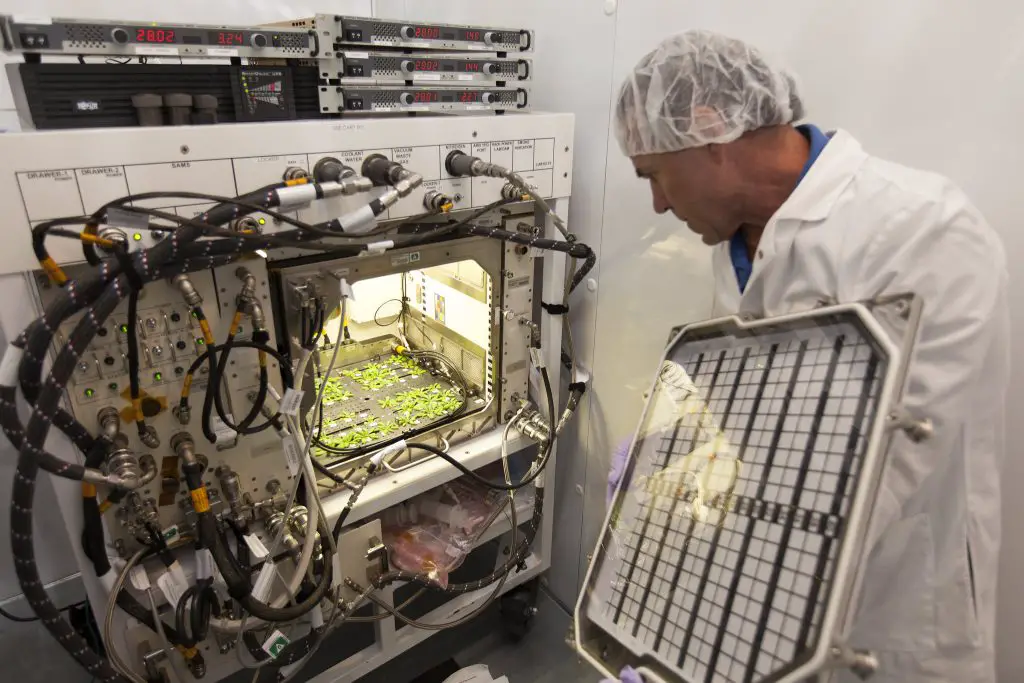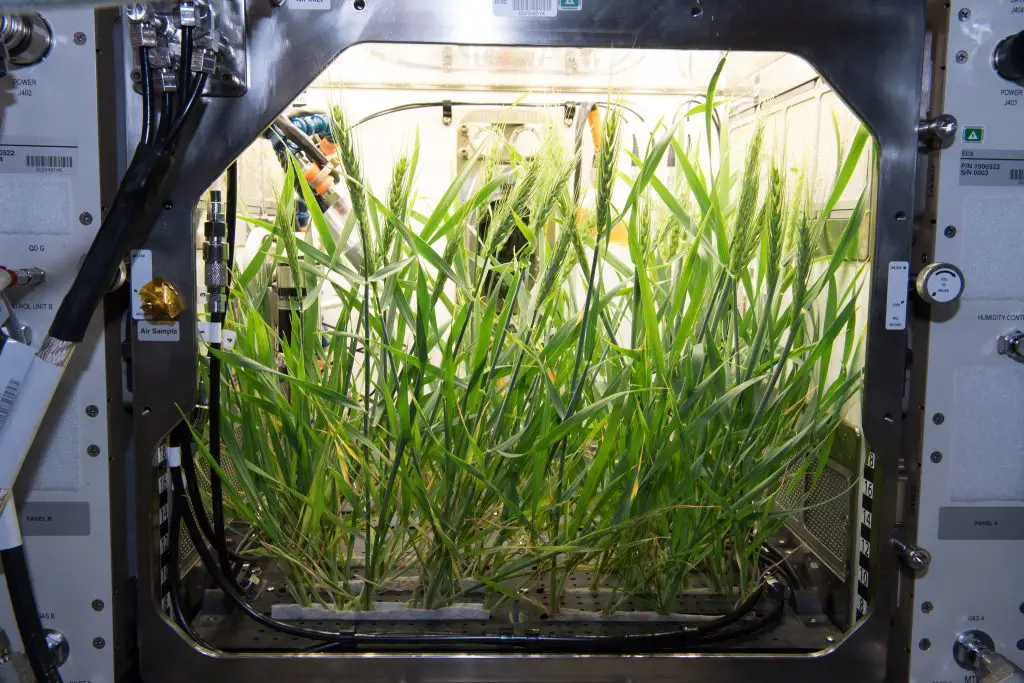Plant growth in microgravity involves unique challenges and adaptations due to the absence of gravity, such as altered root development and nutrient absorption. In this article, we will explore the effects of microgravity on plant growth and the innovative techniques used to facilitate successful cultivation in space.
Plants are crucial to life on earth, providing oxygen, food, and resources. Therefore, understanding their growth in microgravity is vital for sustaining long-duration space missions and potentially cultivating crops for future human colonies on other planets. The absence of gravity affects plant physiology, causing changes in root orientation, nutrient uptake, and the distribution of water and hormones.
To overcome these challenges, scientists and astronauts have developed advanced systems such as plant growth chambers (pgcs) and hydroponics to support plant growth in space. These techniques not only provide fresh food but also contribute to psychological well-being and environmental control in the confined space of a spacecraft. By studying plant growth in microgravity, scientists aim to unlock the secrets of adapting and thriving in extreme environments, paving the way for sustainable extraterrestrial agriculture.

Credit: global.jaxa.jp
Understanding The Impact Of Microgravity On Plant Growth
The growth of plants in microgravity is a fascinating area of study that has captured the attention of scientists and researchers alike. Understanding how plants adapt to the unique conditions of microgravity can have profound implications for future space travel and colonization.
In this blog post, we will delve into the impact of microgravity on plant growth, exploring the effects it has on plant physiology, as well as the challenges and opportunities that arise when adapting to the microgravity environment.
The Effects Of Zero Gravity On Plant Physiology:
- Altered root development: In microgravity, plants exhibit a different pattern of root growth compared to their terrestrial counterparts. Instead of growing vertically, roots tend to spread out horizontally, searching for nutrients and water in all directions.
- Changes in nutrient uptake: The absence of gravity affects the way plants absorb essential nutrients. This can lead to decreased nutrient uptake, resulting in altered growth patterns and overall reduced plant health.
- Modified gene expression: Microgravity triggers alterations in gene expression within plant cells, leading to changes in various physiological processes. This can influence plant growth, development, and overall survival in the microgravity environment.
- Altered plant morphology: Under the influence of microgravity, plants often exhibit unique morphological features. For instance, leaves might display higher transpiration rates, leading to a different leaf shape and structure compared to plants on earth.
Adapting To The Microgravity Environment: Challenges And Opportunities:
- Nutrition management: In order to sustain plant growth in a microgravity environment, it becomes crucial to provide plants with adequate nutrition and water. Innovative cultivation methods, such as hydroponics and aeroponics, offer promising solutions for successful plant cultivation in space.
- Plant support systems: Without the support of gravity, plants struggle to maintain an upright structure. Developing effective mechanisms to provide structural support and prevent plants from floating aimlessly is a key challenge that needs to be addressed.
- Space limitations: Spacecraft and space stations provide limited space for plant growth. It requires careful planning and utilization of available resources to maximize plant growth in the constrained environment of space.
- Impact on human well-being: Plants not only contribute to the aesthetics of the space environment but also play a crucial role in maintaining the psychological well-being of astronauts during long-duration space missions. Understanding how plants can thrive in microgravity can help create green spaces that promote mental health and improve the quality of life for astronauts.
Studying plant growth in microgravity presents numerous opportunities and challenges. By comprehending the effects of zero gravity on plant physiology and finding innovative ways to adapt to the microgravity environment, we can pave the way for sustainable plant cultivation in space and enhance our understanding of plant biology.
As we continue to explore the realms of space, the growth of plants in microgravity becomes an essential aspect of advancing our space exploration endeavors.
The Significance Of Plant Growth In Space Exploration
Space exploration has always been a fascinating subject, with numerous advancements made over the years. One area that has captured the attention of scientists and researchers is plant growth in microgravity. Understanding how plants grow and thrive in the absence of gravity is not only intriguing but also holds significant importance for space exploration.
In this blog post, we will delve into the significance of plant growth in space exploration, exploring how it can sustain life on long-duration space missions and provide fresh food and oxygen in space.
Sustaining Life On Long-Duration Space Missions
- Plants could play a crucial role in sustaining life on long-duration space missions by providing a renewable source of food, oxygen, and psychological well-being for astronauts.
- Growing plants in space can help address the challenge of limited resources and the need for self-sufficiency during extended space travel.
- With the ability to produce fresh food and oxygen, plants can reduce dependency on resupply missions and ensure the health and well-being of astronauts for extended periods.
Providing Fresh Food And Oxygen In Space
- Growing plants in microgravity can offer astronauts access to fresh and nutritious food, which can significantly improve their diet and overall health.
- Plant growth in space can provide a variety of fruits, vegetables, and even herbs, enhancing the taste and quality of the meals consumed by astronauts.
- Additionally, plants release oxygen as a byproduct of photosynthesis, contributing to the creation of a breathable atmosphere inside spacecraft.
- This can alleviate the need for carrying large amounts of stored oxygen, making space travel more sustainable and efficient.
The significance of plant growth in space exploration cannot be underestimated. The ability to sustain life on long-duration space missions and provide fresh food and oxygen offers numerous benefits for astronauts and space travel as a whole. It opens up new possibilities for self-sufficiency, improves the quality of life for astronauts, and reduces reliance on earth for essential resources.
As we continue to explore and venture further into the cosmos, understanding how plants can thrive and flourish in microgravity will be crucial for the future of space exploration.
Techniques And Experiments For Growing Plants In Microgravity
Plant growth in microgravity is a fascinating topic that has garnered significant attention in recent years. Scientists and researchers have been exploring various techniques and experiments to facilitate plant growth in the challenging conditions of space. In this blog post, we will delve into two key aspects of cultivating plants in microgravity: the use of hydroponics and the role of led lighting.
These innovative approaches hold immense promise for enabling sustainable plant growth beyond earth’s confines. Let’s explore them further.
Hydroponics: A Promising Approach For Cultivating Plants In Zero Gravity
Hydroponics, a soil-less method of growing plants, has emerged as an effective technique for cultivating plants in zero gravity environments. This approach involves providing essential nutrients directly to the plant’s roots through a water-based solution. Here are the key points to consider:
- Hydroponics eliminates the need for soil, which can be a challenge to manage in microgravity conditions.
- Nutrient solutions used in hydroponics can be precisely tailored to meet the specific needs of different plants, resulting in optimized growth and development.
- The absence of gravitational pull allows plants to distribute water and nutrients more evenly, promoting balanced growth and reducing the risk of root rot.
- Hydroponics systems in space often utilize porous substrates or synthetic materials to support plant roots and facilitate nutrient absorption.
- This technique holds great potential for sustaining long-duration space exploration missions, as it requires minimal resources and provides a controlled and efficient way to grow plants.
The Role Of Led Lighting In Optimizing Plant Growth In Space
Lighting plays a crucial role in plant growth, and in the context of microgravity, led technology has proven to be highly beneficial. Here are the key takeaways:
- Led lights emit specific wavelengths that can be tailored to meet the precise requirements of plants at different growth stages.
- Unlike traditional lighting systems, led lights produce minimal heat, reducing the risk of damage to plants and equipment in the confined space environment.
- Led lighting systems can be fine-tuned to provide the ideal light intensity, duration, and color spectrum needed for optimal photosynthesis.
- In space, where natural sunlight is absent or limited, led lights can provide a reliable and energy-efficient source of artificial light for plant growth.
- Plants grown under led lighting in microgravity have shown promising results, with enhanced growth rates, improved nutritional content, and increased crop yields.
By harnessing the power of hydroponics and utilizing led lighting systems, researchers are making significant progress in their efforts to establish sustainable plant growth in microgravity environments. These advancements are vital not only for supporting future space missions but also for expanding our understanding of plant biology and the potential for extraterrestrial farming.
Exciting times lie ahead as we continue to explore the frontiers of plant growth beyond earth.
Overcoming Challenges: Nutrient Delivery Systems In Microgravity
Plant growth in microgravity poses unique challenges due to the absence of gravitational forces that plants on earth rely on. In a weightless environment, plants struggle to uptake water and nutrients, resulting in stunted growth or even death. Overcoming these challenges requires innovations in nutrient delivery systems that can provide plants with the essential elements they need to thrive.
In this section, we will explore some of the latest developments in this field and how they are revolutionizing plant growth in space.
Innovations In Nutrient Delivery Systems For Plant Growth In A Weightless Environment
Aeroponics, a technique that involves misting the plant roots with a nutrient-rich solution, has emerged as a promising solution for growing plants in microgravity. By eliminating the need for soil, aeroponics allows plants to absorb nutrients directly from the mist, ensuring efficient nutrient delivery.
This method also reduces water and nutrient waste, making it an environmentally friendly option for space missions.
Other alternative techniques, such as hydroponics and aquaponics, have also shown great potential in supporting plant growth in microgravity. Hydroponics involves growing plants in nutrient-rich water, while aquaponics combines hydroponics with aquaculture, where fish waste provides the nutrients for plants.
These innovative approaches provide plants with a constant supply of nutrients while minimizing resource consumption.
While traditional soil-based systems are not feasible in space, researchers are exploring the possibility of using regolith-based systems. Regolith, the layer of loose rocks and soil found on celestial bodies, can be utilized to create a simulated soil that supports plant growth.
This approach offers the advantage of utilizing local resources during long-duration space missions, reducing the need for resupply missions.
Nutrient delivery systems play a crucial role in facilitating plant growth in microgravity. Innovations such as aeroponics, hydroponics, aquaponics, and regolith-based systems are revolutionizing the way plants are cultivated in space. These advancements not only provide astronauts with fresh food but also offer valuable insights into sustainable agriculture both on and off earth.
As we continue to push the boundaries of space exploration, further advancements in nutrient delivery systems will be critical for ensuring the success of long-duration missions.
Frequently Asked Questions On Plant Growth In Microgravity
How Does Microgravity Affect Plant Growth?
In microgravity, plants grow differently due to the absence of gravity’s influence on root development and nutrient uptake. Plants adapt to their new environment by growing smaller, with shorter roots and thicker stems, in order to conserve energy and adjust to reduced water availability.
Do Plants Grow Faster In Microgravity?
Plants grown in microgravity typically experience slower growth rates compared to their counterparts on earth. The absence of gravity affects nutrient distribution, water uptake, and overall plant development, leading to a slower growth rate.
Can Plants Survive Without Gravity?
Plants are capable of surviving without gravity, as they have been successfully grown in space and during astronaut missions. Researchers have developed methods to provide the necessary conditions for plants to grow and thrive in space habitats, including the provision of light, nutrients, and moisture.
How Are Plants Grown In Microgravity?
In microgravity environments, plants are typically grown hydroponically, using water-based nutrient solutions instead of soil. Specialized systems are designed to provide the necessary lighting, water, and nutrients for plant growth, while minimizing the effects of microgravity on root development and nutrient distribution.
What Challenges Are Faced In Growing Plants In Microgravity?
Growing plants in microgravity poses several challenges, such as ensuring proper nutrient distribution and uptake, managing water availability, preventing mold and pathogens, and maintaining lighting conditions for photosynthesis. Researchers are continually developing innovative strategies to overcome these challenges and improve plant growth in space.
Conclusion
Plant growth in microgravity has been a significant area of research for scientists and space agencies. The findings of numerous experiments have shown that plants can adapt to the unique conditions of space and continue to grow, albeit with some differences compared to earth.
The lack of gravity affects root development, resulting in shorter and denser root structures, while plants tend to elongate and display a more disorganized leaf arrangement. Despite these adaptations, plants still thrive and produce oxygen, which is crucial for sustaining life in space.
This research has provided valuable insights into potential methods for growing food on long-duration space missions, such as to mars. As we continue to explore and venture further into space, understanding plant growth in microgravity will play a crucial role in ensuring the success of future space exploration endeavors.
By applying the lessons we learn from these experiments, we can pave the way for sustainable living and colonization beyond earth.




